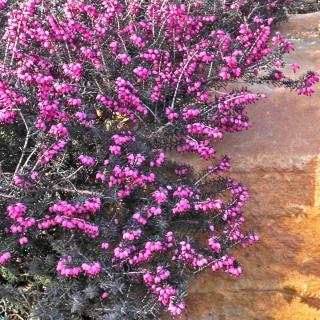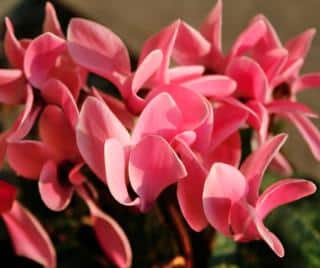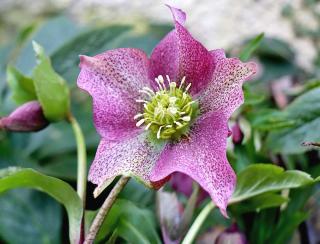

Tending to flowers in planters comes naturally in spring and summer—they’re perfect for dressing up decks and balconies. But winter is also a season where flowers and colors abound! Discover our selection of winter flowers for planters and garden boxes.

Winter heather opens its first flowers at the end of fall, and it’ll keep going till the end of winter. It’s true: this sub-shrub displays white or pink flowers for months! Each upright stem is dotted with tiny bell-shaped flowers. The bloom nearly covers the entire plant, making a wonderful spot of color. Here are two low-growing varieties ideal for planters and garden boxes:
You can plant heather in garden boxes in either fall or spring—but don’t plant during a freeze. Combine several varieties to fill the box, leaving about 1 ft (30 cm) between plants. Soak the root balls in a pail of water before planting so they’re fully hydrated. Prepare a well-draining mix over a bed of clay pebbles. Potting mix proportions: 1/2 ericaceous (heath) soil, 1/4 all-purpose mix or garden soil, 1/4 perlite.

Some cyclamen species bloom when winter is coldest. The plant forms a rosette of deep-green oval leaves—often with silver marbling. From this cluster, slender green or purple stems rise to bear solitary flowers with 5 white, pink, red or purple reflexed petals.
Cyclamen prefer a well-draining substrate and shaded to part-shade exposure. Set them in a light potting mix over a drainage layer. Bury tubers about 1/2 in (1 cm) deep, tip up, from July to October. Water to keep the mix just cool, never soggy, in winter. During bloom, add a little liquid fertilizer when watering. From spring to summer, gradually withhold water to let them rest.
The Christmas rose truly earns its name: depending on the variety, it blooms from December through March–April. Cold doesn’t stop these elegant flowers. A clump of evergreen leaves forms a mound, from which taller stems arise. Each cup-shaped flower has 5 tepals and a ring of stamens. Colors vary—from green to nearly black, pink, or white—with rims, veins, or speckles near the heart.

All hellebores bloom in winter. A few standout cultivars:
Hellebore loves cool, deep, rich soil. Plant in a blend of potting mix and compost, using a large container. Best location: shade or part shade—they dislike full sun. Top-dress with compost twice a year to keep the mix cool and nutritious.
Read also: